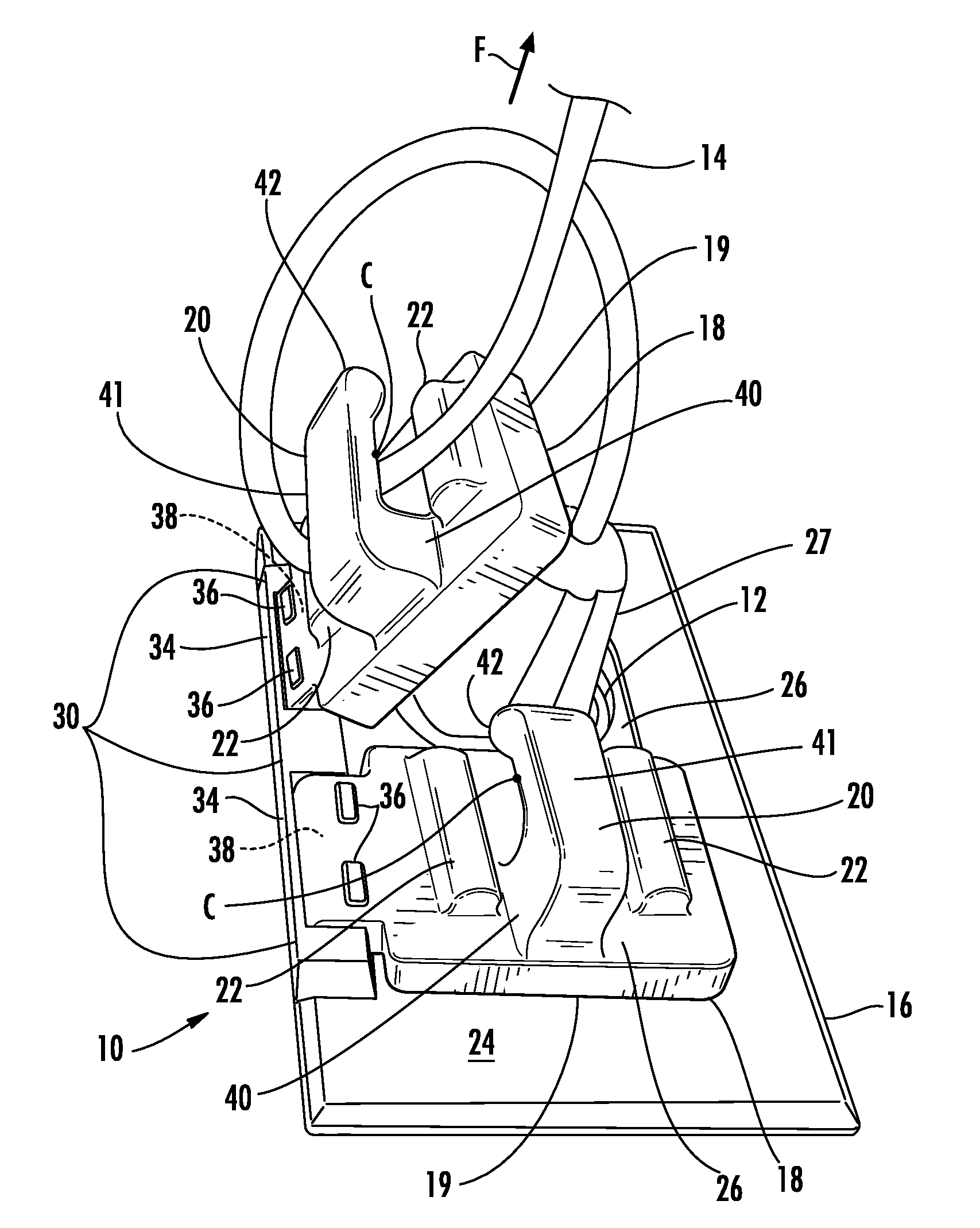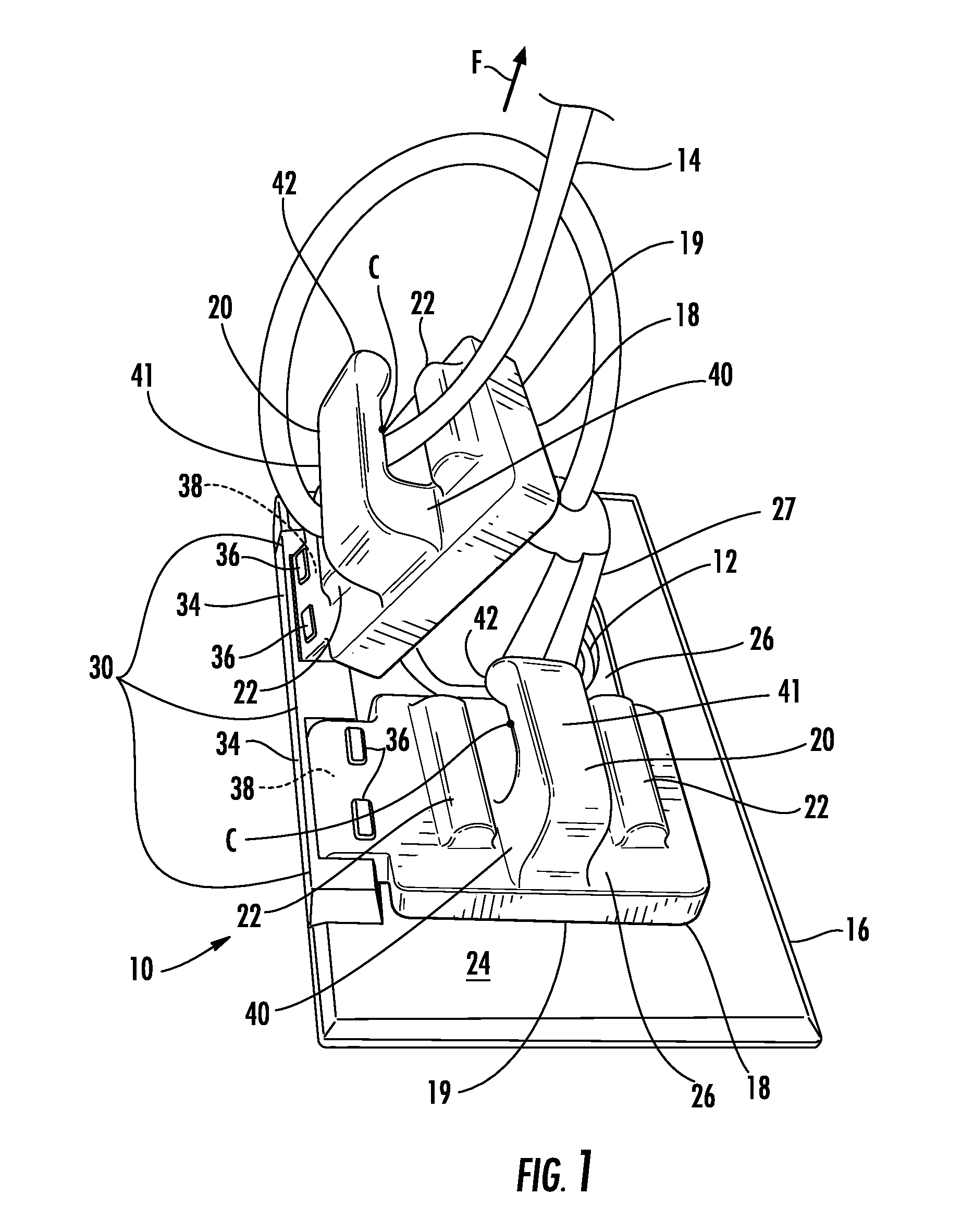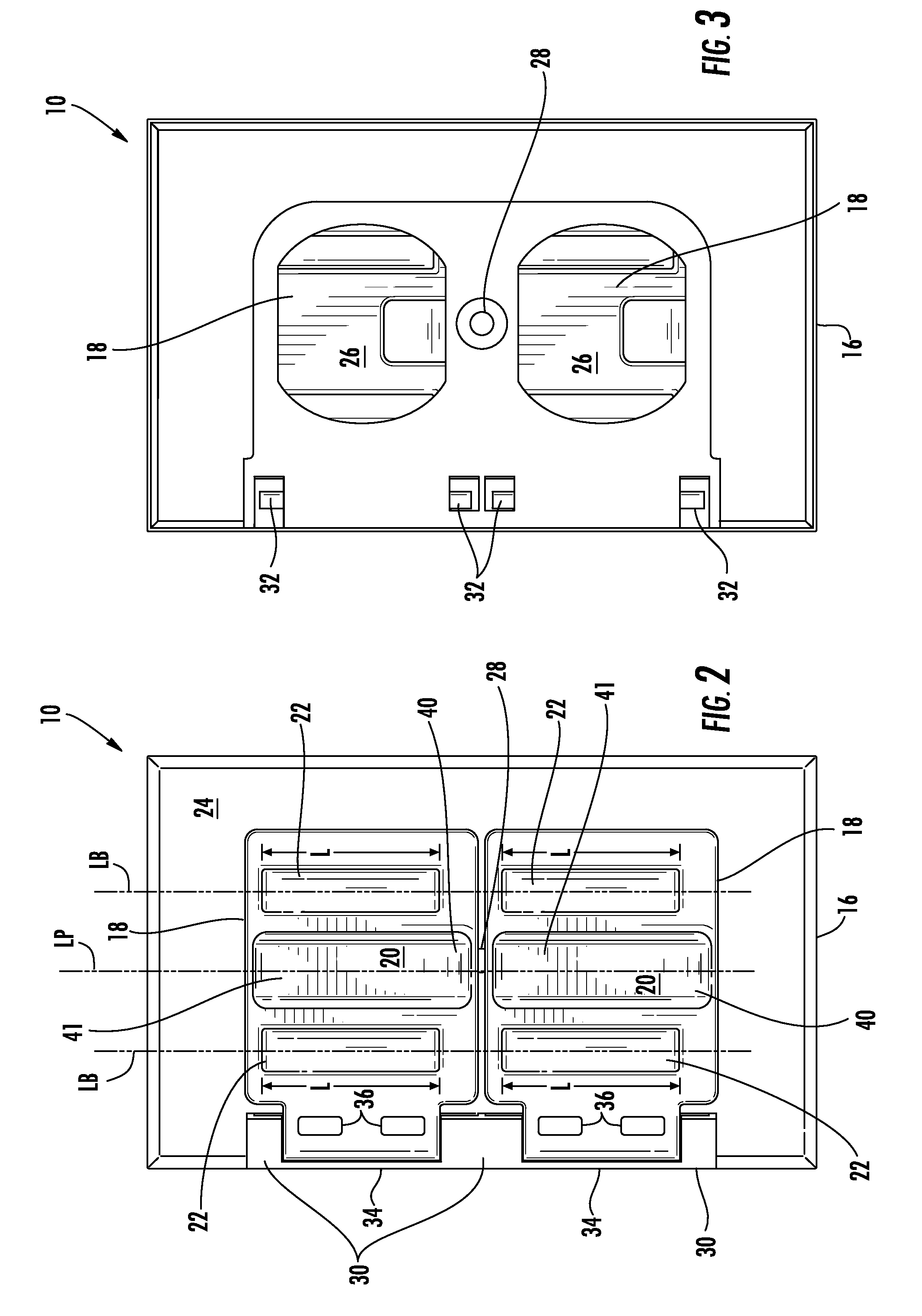Cord securing cover for an electrical outlet
a technology for electrical outlets and cords, applied in the direction of coupling parts engagement/disengagement, coupling device connection, incorrect coupling prevention, etc., can solve the problems of frequent disconnection of power to electrically powered devices, electrical plugs that do not fit tightly, and cords that can become electrically disconnected from the receptacle, so as to prevent unintentional disconnection of electrical plugs, restrict tension forces, and prevent unintentional disconnection of electrical cords
- Summary
- Abstract
- Description
- Claims
- Application Information
AI Technical Summary
Benefits of technology
Problems solved by technology
Method used
Image
Examples
Embodiment Construction
[0087]The present invention will now be described more fully hereinafter with reference to the accompanying drawings in which preferred embodiments of the invention are shown. This invention may, however, be embodied in many different forms and should not be considered as limited to the embodiments set forth herein. These exemplary embodiments are provided so that this disclosure will be both thorough and complete, and will fully convey the scope of the invention to those skilled in the art. Use of alpha-numeric reference numbers, in which the numeric portion is the same in different embodiments identifies that the element is functionally substantially similar in the various embodiments, whereas differences in the alpha portion identifies different embodiments. Accordingly, the description associated with a reference number, e.g. 20, is understood to be read into reference numbers with a different alpha portion, e.g. 20b, except as otherwise noted.
[0088]The present invention is an o...
PUM
 Login to View More
Login to View More Abstract
Description
Claims
Application Information
 Login to View More
Login to View More - R&D
- Intellectual Property
- Life Sciences
- Materials
- Tech Scout
- Unparalleled Data Quality
- Higher Quality Content
- 60% Fewer Hallucinations
Browse by: Latest US Patents, China's latest patents, Technical Efficacy Thesaurus, Application Domain, Technology Topic, Popular Technical Reports.
© 2025 PatSnap. All rights reserved.Legal|Privacy policy|Modern Slavery Act Transparency Statement|Sitemap|About US| Contact US: help@patsnap.com



